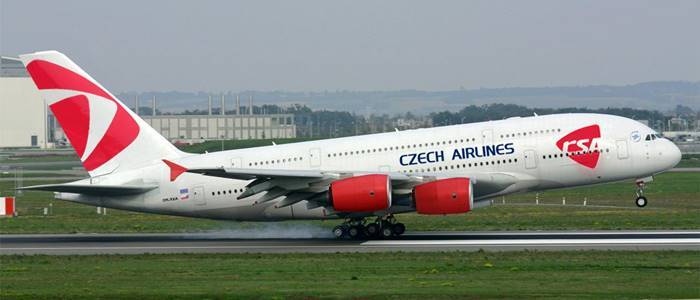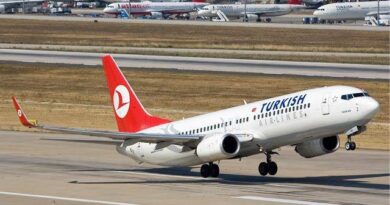Brief History of Czech Airlines
Czech Airlines, also known as ČSA, is one of the oldest airlines in the world, with a rich history that spans over a century. The airline was established in 1923, just five years after the establishment of Czechoslovakia as an independent country, and has since become a significant contributor to the country’s aviation industry and its global reputation.
A Legacy in European Aviation
Czech Airlines held a special place in global aviation history as one of the oldest operating airlines in the world. Founded in 1923, it was the national carrier of Czechoslovakia and later the Czech Republic, playing a key role in connecting Central Europe to the rest of the world. With over a century of service, ČSA not only symbolized national pride but also contributed to the development of commercial aviation across Europe. Its legacy endures as a testament to the evolution of air travel in the modern era.
The early years of Czech Airlines were marked by significant growth, with the airline quickly expanding its routes and fleet. The airline’s first international route was launched in 1930, connecting Prague to Bratislava, and was followed by other international routes to cities such as Paris, Berlin, and Moscow. During World War II, Czech Airlines was nationalized and temporarily ceased operations, but resumed services after the war.
In the post-war period, Czech Airlines continued to expand its route network, adding destinations in Europe, the Middle East, and Asia. The airline also modernized its fleet, introducing jet aircraft in the 1960s and 1970s. By the 1980s, Czech Airlines had become one of the largest airlines in Eastern Europe, serving over 50 destinations and carrying millions of passengers annually.

source: skyscrapercity.com
Following the Velvet Revolution in 1989, which brought an end to Communist rule in Czechoslovakia, Czech Airlines underwent significant changes. The airline was privatized in 1992, and began a period of restructuring and modernization. The airline invested in new aircraft, including Boeing 737 and Airbus A310, and expanded its route network to include new destinations in Europe, Asia, and North America.
Ownership Transitions and Strategic Partnerships
Over the decades, Czech Airlines underwent several ownership changes that significantly influenced its strategic direction. A pivotal moment came in 2013 when Korean Air acquired a 44% stake in ČSA, becoming the first non-European airline to invest in a European flag carrier under the EU’s liberalized ownership rules. This partnership aimed to strengthen ČSA’s presence in Asia and integrate it more deeply into global air transport networks. However, in 2017, Korean Air sold its shares to Travel Service—a Czech-based private airline company that later rebranded as Smartwings. With this transition, Smartwings became the majority stakeholder, marking a shift in focus toward a more regional, low-cost operating model. This change in ownership laid the foundation for the eventual integration of ČSA’s remaining operations under the Smartwings brand.
Czech Airlines Faced Challenges
Despite its historic legacy and strategic alliances, Czech Airlines faced a series of mounting challenges in the 21st century. The liberalization of the European aviation market introduced fierce competition from low-cost carriers such as Ryanair and Wizz Air, which significantly undercut traditional airlines on price. ČSA struggled to adapt its business model to this changing environment. Additionally, the global financial crisis of 2008–2009 weakened demand, while internal restructuring efforts failed to produce long-term stability.
The airline also suffered from inconsistent management strategies and shifting ownership, which led to operational inefficiencies and strategic misalignment. The COVID-19 pandemic dealt a final blow, as it did to many airlines globally, forcing ČSA to drastically reduce its operations. By 2021, the company filed for reorganization under Czech insolvency law and operated with only a fraction of its former fleet. These compounding issues eventually led to the airline ceasing flight operations entirely in 2024.

Fleet and Operational Status Before Closure
In its final years before ceasing independent operations, Czech Airlines operated a significantly reduced fleet. By 2024, the airline’s active fleet consisted of only two Airbus A320 aircraft, a stark contrast to its once broader fleet that included Airbus A319s and A321s. The airline had previously served over 50 destinations across Europe, Asia, and the Middle East, but its network was gradually scaled back due to financial difficulties and declining passenger demand.
While Czech Airlines had once earned praise for its in-flight service, comfort, and efficiency—especially during its peak years—its later operations were marked by uncertainty and limited resources. Following its final commercial flight in October 2024, all flight operations were taken over by Smartwings, and Czech Airlines transitioned into a non-operating holding company.
In conclusion, Czech Airlines is one of the oldest and most significant airlines in the world, with a rich history that spans nearly a century. Despite facing challenges over the years, the airline has remained a major player in the global aviation industry, and continues to innovate and adapt to meet the needs of its customers. With its strong commitment to quality and service, Czech Airlines is poised to continue its success for many years to come.


